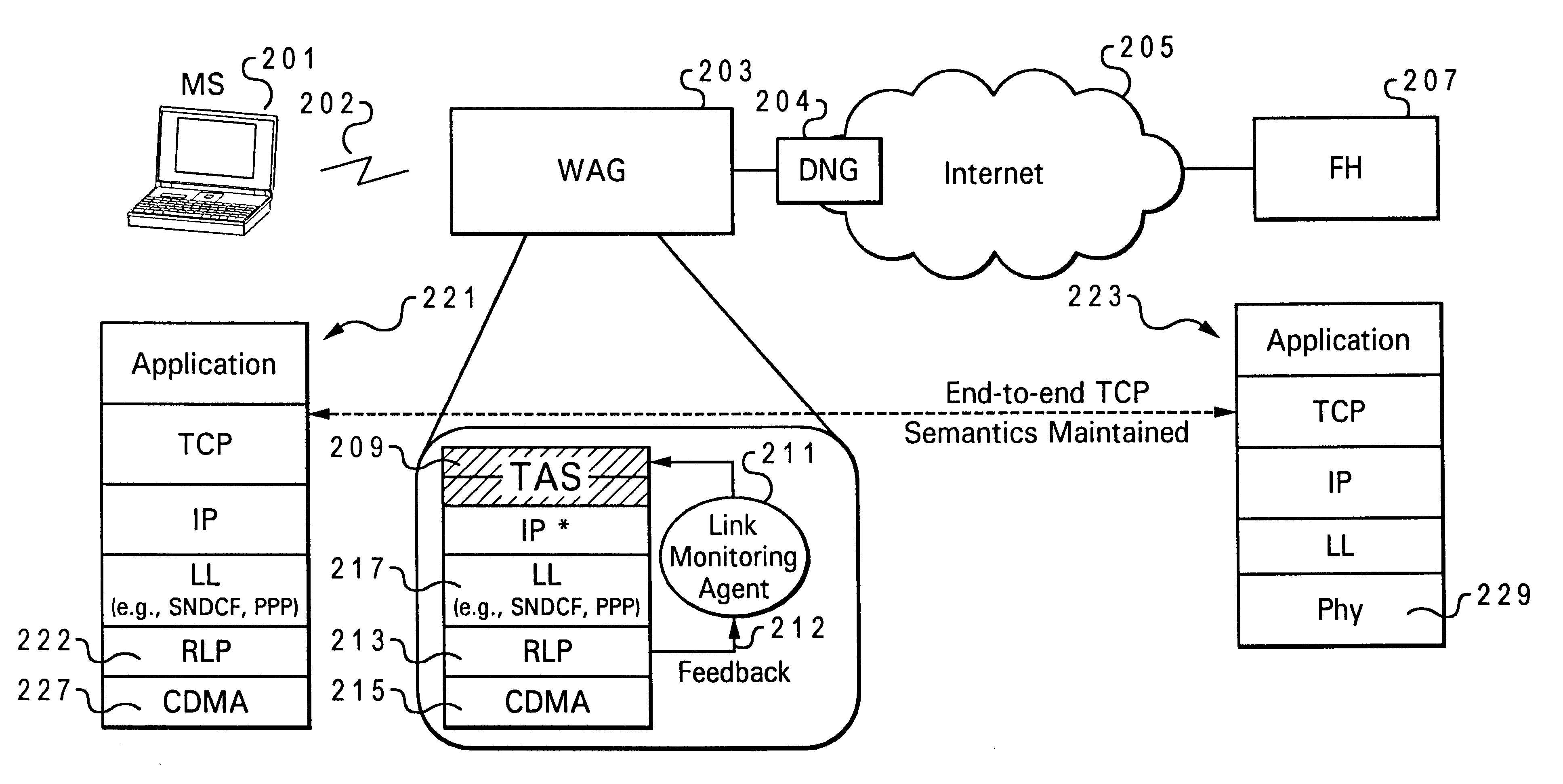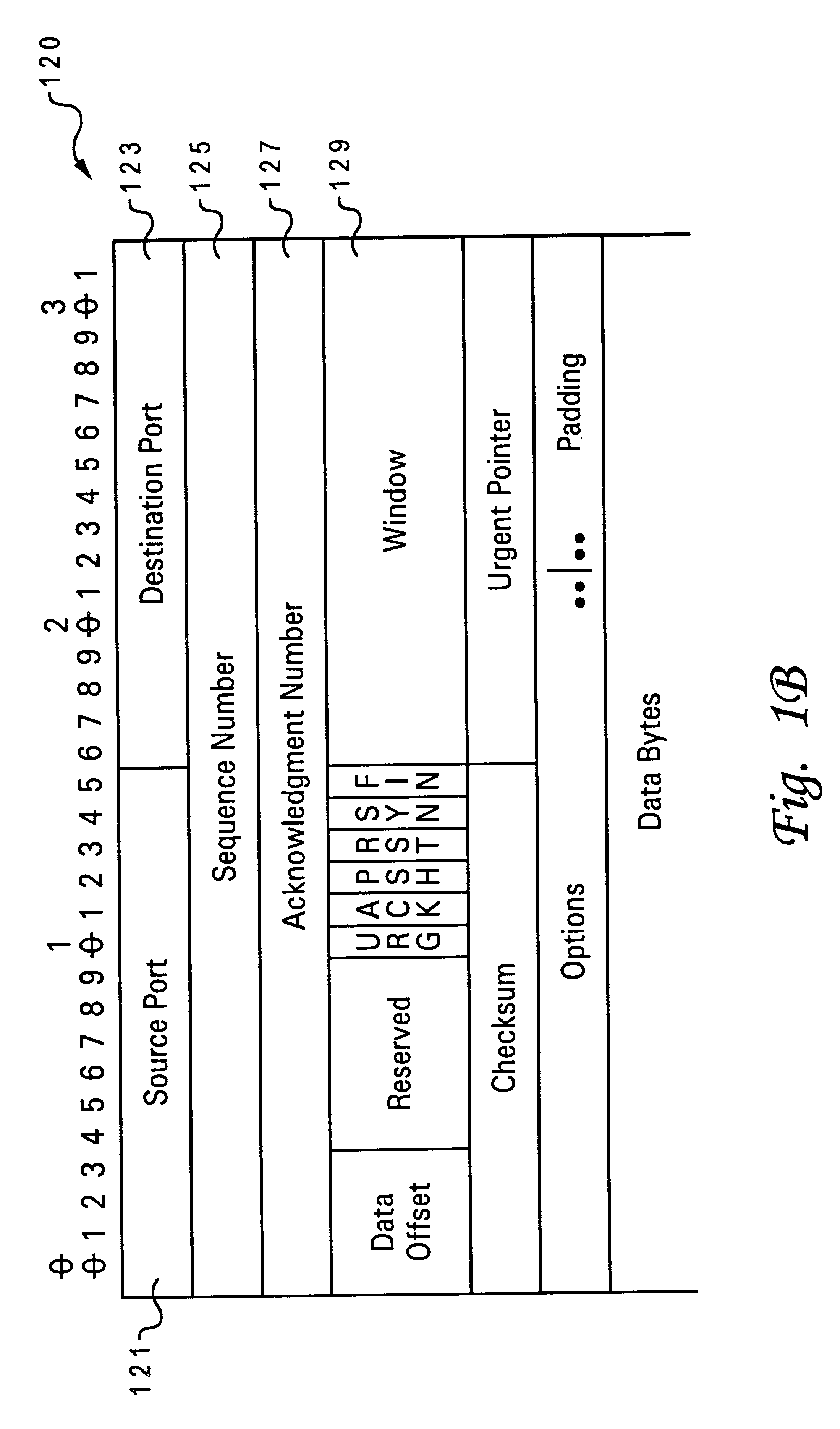TCP-aware agent sublayer (TAS) for robust TCP over wireless
a wireless and agent sublayer technology, applied in the field of electronic communication systems, can solve the problems of rlp retransmission mechanism futile, tcp throughput to degrade unnecessarily, and worsening of wireless links with prolonged fading/shadowing
- Summary
- Abstract
- Description
- Claims
- Application Information
AI Technical Summary
Benefits of technology
Problems solved by technology
Method used
Image
Examples
Embodiment Construction
The present invention implements a scheme to enhance TCP performance for various kinds of radio link conditions, including short term fadings as well as prolonged disconnection during loss of coverage or hard hand-offs. The invention is implemented as a TCP-aware Agent Sub-layer (TAS) which extends the caching and retransmission mechanism proposed by the Snoop protocol by incorporating new mechanisms such as TCP ACK delay and source TCP window quench. In the preferred embodiment, TAS is transparent to any generation (2.5 G or 3 G) wireless data standards for cellular networks. Code Division Multiple Access (CDMA) standard air interface is utilized. TAS when implemented exhibits a significant increase in the robustness of TCP performance under various air-link failure conditions.
A CDMA physical layer following the Internet Standard (IS)-95 standards is utilized in one embodiment with a bit rate of 57.6 Kbps. The main blocks of the physical layer includes a convolutional encoder and V...
PUM
 Login to View More
Login to View More Abstract
Description
Claims
Application Information
 Login to View More
Login to View More - R&D
- Intellectual Property
- Life Sciences
- Materials
- Tech Scout
- Unparalleled Data Quality
- Higher Quality Content
- 60% Fewer Hallucinations
Browse by: Latest US Patents, China's latest patents, Technical Efficacy Thesaurus, Application Domain, Technology Topic, Popular Technical Reports.
© 2025 PatSnap. All rights reserved.Legal|Privacy policy|Modern Slavery Act Transparency Statement|Sitemap|About US| Contact US: help@patsnap.com



